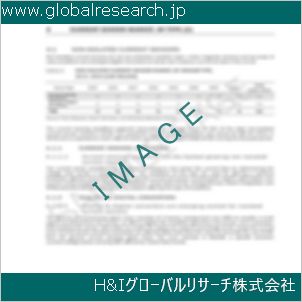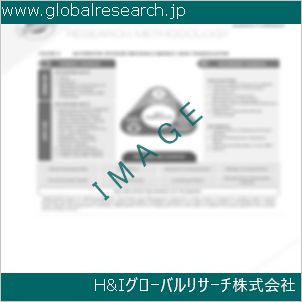1 Rubber to Oil Systems Market Overview
1.1 Product Definition
1.2 Rubber to Oil Systems Segment by Type
1.2.1 Global Rubber to Oil Systems Market Value Growth Rate Analysis by Type 2022 VS 2029
1.2.2 Manual
1.2.3 Automatic
1.3 Rubber to Oil Systems Segment by Application
1.3.1 Global Rubber to Oil Systems Market Value Growth Rate Analysis by Application: 2022 VS 2029
1.3.2 Public Utility
1.3.3 Industry
1.3.4 Others
1.4 Global Market Growth Prospects
1.4.1 Global Rubber to Oil Systems Production Value Estimates and Forecasts (2018-2029)
1.4.2 Global Rubber to Oil Systems Production Capacity Estimates and Forecasts (2018-2029)
1.4.3 Global Rubber to Oil Systems Production Estimates and Forecasts (2018-2029)
1.4.4 Global Rubber to Oil Systems Market Average Price Estimates and Forecasts (2018-2029)
1.5 Assumptions and Limitations
2 Market Competition by Manufacturers
2.1 Global Rubber to Oil Systems Production Market Share by Manufacturers (2018-2023)
2.2 Global Rubber to Oil Systems Production Value Market Share by Manufacturers (2018-2023)
2.3 Global Key Players of Rubber to Oil Systems, Industry Ranking, 2021 VS 2022 VS 2023
2.4 Global Rubber to Oil Systems Market Share by Company Type (Tier 1, Tier 2 and Tier 3)
2.5 Global Rubber to Oil Systems Average Price by Manufacturers (2018-2023)
2.6 Global Key Manufacturers of Rubber to Oil Systems, Manufacturing Base Distribution and Headquarters
2.7 Global Key Manufacturers of Rubber to Oil Systems, Product Offered and Application
2.8 Global Key Manufacturers of Rubber to Oil Systems, Date of Enter into This Industry
2.9 Rubber to Oil Systems Market Competitive Situation and Trends
2.9.1 Rubber to Oil Systems Market Concentration Rate
2.9.2 Global 5 and 10 Largest Rubber to Oil Systems Players Market Share by Revenue
2.10 Mergers & Acquisitions, Expansion
3 Rubber to Oil Systems Production by Region
3.1 Global Rubber to Oil Systems Production Value Estimates and Forecasts by Region: 2018 VS 2022 VS 2029
3.2 Global Rubber to Oil Systems Production Value by Region (2018-2029)
3.2.1 Global Rubber to Oil Systems Production Value Market Share by Region (2018-2023)
3.2.2 Global Forecasted Production Value of Rubber to Oil Systems by Region (2024-2029)
3.3 Global Rubber to Oil Systems Production Estimates and Forecasts by Region: 2018 VS 2022 VS 2029
3.4 Global Rubber to Oil Systems Production by Region (2018-2029)
3.4.1 Global Rubber to Oil Systems Production Market Share by Region (2018-2023)
3.4.2 Global Forecasted Production of Rubber to Oil Systems by Region (2024-2029)
3.5 Global Rubber to Oil Systems Market Price Analysis by Region (2018-2023)
3.6 Global Rubber to Oil Systems Production and Value, Year-over-Year Growth
3.6.1 North America Rubber to Oil Systems Production Value Estimates and Forecasts (2018-2029)
3.6.2 Europe Rubber to Oil Systems Production Value Estimates and Forecasts (2018-2029)
3.6.3 China Rubber to Oil Systems Production Value Estimates and Forecasts (2018-2029)
3.6.4 Japan Rubber to Oil Systems Production Value Estimates and Forecasts (2018-2029)
4 Rubber to Oil Systems Consumption by Region
4.1 Global Rubber to Oil Systems Consumption Estimates and Forecasts by Region: 2018 VS 2022 VS 2029
4.2 Global Rubber to Oil Systems Consumption by Region (2018-2029)
4.2.1 Global Rubber to Oil Systems Consumption by Region (2018-2023)
4.2.2 Global Rubber to Oil Systems Forecasted Consumption by Region (2024-2029)
4.3 North America
4.3.1 North America Rubber to Oil Systems Consumption Growth Rate by Country: 2018 VS 2022 VS 2029
4.3.2 North America Rubber to Oil Systems Consumption by Country (2018-2029)
4.3.3 U.S.
4.3.4 Canada
4.4 Europe
4.4.1 Europe Rubber to Oil Systems Consumption Growth Rate by Country: 2018 VS 2022 VS 2029
4.4.2 Europe Rubber to Oil Systems Consumption by Country (2018-2029)
4.4.3 Germany
4.4.4 France
4.4.5 U.K.
4.4.6 Italy
4.4.7 Russia
4.5 Asia Pacific
4.5.1 Asia Pacific Rubber to Oil Systems Consumption Growth Rate by Region: 2018 VS 2022 VS 2029
4.5.2 Asia Pacific Rubber to Oil Systems Consumption by Region (2018-2029)
4.5.3 China
4.5.4 Japan
4.5.5 South Korea
4.5.6 China Taiwan
4.5.7 Southeast Asia
4.5.8 India
4.6 Latin America, Middle East & Africa
4.6.1 Latin America, Middle East & Africa Rubber to Oil Systems Consumption Growth Rate by Country: 2018 VS 2022 VS 2029
4.6.2 Latin America, Middle East & Africa Rubber to Oil Systems Consumption by Country (2018-2029)
4.6.3 Mexico
4.6.4 Brazil
4.6.5 Turkey
5 Segment by Type
5.1 Global Rubber to Oil Systems Production by Type (2018-2029)
5.1.1 Global Rubber to Oil Systems Production by Type (2018-2023)
5.1.2 Global Rubber to Oil Systems Production by Type (2024-2029)
5.1.3 Global Rubber to Oil Systems Production Market Share by Type (2018-2029)
5.2 Global Rubber to Oil Systems Production Value by Type (2018-2029)
5.2.1 Global Rubber to Oil Systems Production Value by Type (2018-2023)
5.2.2 Global Rubber to Oil Systems Production Value by Type (2024-2029)
5.2.3 Global Rubber to Oil Systems Production Value Market Share by Type (2018-2029)
5.3 Global Rubber to Oil Systems Price by Type (2018-2029)
6 Segment by Application
6.1 Global Rubber to Oil Systems Production by Application (2018-2029)
6.1.1 Global Rubber to Oil Systems Production by Application (2018-2023)
6.1.2 Global Rubber to Oil Systems Production by Application (2024-2029)
6.1.3 Global Rubber to Oil Systems Production Market Share by Application (2018-2029)
6.2 Global Rubber to Oil Systems Production Value by Application (2018-2029)
6.2.1 Global Rubber to Oil Systems Production Value by Application (2018-2023)
6.2.2 Global Rubber to Oil Systems Production Value by Application (2024-2029)
6.2.3 Global Rubber to Oil Systems Production Value Market Share by Application (2018-2029)
6.3 Global Rubber to Oil Systems Price by Application (2018-2029)
7 Key Companies Profiled
7.1 Kingtiger Environmental Technology
7.1.1 Kingtiger Environmental Technology Rubber to Oil Systems Corporation Information
7.1.2 Kingtiger Environmental Technology Rubber to Oil Systems Product Portfolio
7.1.3 Kingtiger Environmental Technology Rubber to Oil Systems Production, Value, Price and Gross Margin (2018-2023)
7.1.4 Kingtiger Environmental Technology Main Business and Markets Served
7.1.5 Kingtiger Environmental Technology Recent Developments/Updates
7.2 BESTON GROUP
7.2.1 BESTON GROUP Rubber to Oil Systems Corporation Information
7.2.2 BESTON GROUP Rubber to Oil Systems Product Portfolio
7.2.3 BESTON GROUP Rubber to Oil Systems Production, Value, Price and Gross Margin (2018-2023)
7.2.4 BESTON GROUP Main Business and Markets Served
7.2.5 BESTON GROUP Recent Developments/Updates
7.3 Henan Doing Environmental Protection Technology
7.3.1 Henan Doing Environmental Protection Technology Rubber to Oil Systems Corporation Information
7.3.2 Henan Doing Environmental Protection Technology Rubber to Oil Systems Product Portfolio
7.3.3 Henan Doing Environmental Protection Technology Rubber to Oil Systems Production, Value, Price and Gross Margin (2018-2023)
7.3.4 Henan Doing Environmental Protection Technology Main Business and Markets Served
7.3.5 Henan Doing Environmental Protection Technology Recent Developments/Updates
7.4 Enviro
7.4.1 Enviro Rubber to Oil Systems Corporation Information
7.4.2 Enviro Rubber to Oil Systems Product Portfolio
7.4.3 Enviro Rubber to Oil Systems Production, Value, Price and Gross Margin (2018-2023)
7.4.4 Enviro Main Business and Markets Served
7.4.5 Enviro Recent Developments/Updates
7.5 Divya International
7.5.1 Divya International Rubber to Oil Systems Corporation Information
7.5.2 Divya International Rubber to Oil Systems Product Portfolio
7.5.3 Divya International Rubber to Oil Systems Production, Value, Price and Gross Margin (2018-2023)
7.5.4 Divya International Main Business and Markets Served
7.5.5 Divya International Recent Developments/Updates
7.6 Metso Outotec
7.6.1 Metso Outotec Rubber to Oil Systems Corporation Information
7.6.2 Metso Outotec Rubber to Oil Systems Product Portfolio
7.6.3 Metso Outotec Rubber to Oil Systems Production, Value, Price and Gross Margin (2018-2023)
7.6.4 Metso Outotec Main Business and Markets Served
7.6.5 Metso Outotec Recent Developments/Updates
7.7 Shree Balaji Engineering Works
7.7.1 Shree Balaji Engineering Works Rubber to Oil Systems Corporation Information
7.7.2 Shree Balaji Engineering Works Rubber to Oil Systems Product Portfolio
7.7.3 Shree Balaji Engineering Works Rubber to Oil Systems Production, Value, Price and Gross Margin (2018-2023)
7.7.4 Shree Balaji Engineering Works Main Business and Markets Served
7.7.5 Shree Balaji Engineering Works Recent Developments/Updates
7.8 ECO USA
7.8.1 ECO USA Rubber to Oil Systems Corporation Information
7.8.2 ECO USA Rubber to Oil Systems Product Portfolio
7.8.3 ECO USA Rubber to Oil Systems Production, Value, Price and Gross Margin (2018-2023)
7.8.4 ECO USA Main Business and Markets Served
7.7.5 ECO USA Recent Developments/Updates
7.9 E&M Combustión
7.9.1 E&M Combustión Rubber to Oil Systems Corporation Information
7.9.2 E&M Combustión Rubber to Oil Systems Product Portfolio
7.9.3 E&M Combustión Rubber to Oil Systems Production, Value, Price and Gross Margin (2018-2023)
7.9.4 E&M Combustión Main Business and Markets Served
7.9.5 E&M Combustión Recent Developments/Updates
7.10 Xinxiang Huayin Renewable Engery Equipment
7.10.1 Xinxiang Huayin Renewable Engery Equipment Rubber to Oil Systems Corporation Information
7.10.2 Xinxiang Huayin Renewable Engery Equipment Rubber to Oil Systems Product Portfolio
7.10.3 Xinxiang Huayin Renewable Engery Equipment Rubber to Oil Systems Production, Value, Price and Gross Margin (2018-2023)
7.10.4 Xinxiang Huayin Renewable Engery Equipment Main Business and Markets Served
7.10.5 Xinxiang Huayin Renewable Engery Equipment Recent Developments/Updates
7.11 No-Waste-Technology
7.11.1 No-Waste-Technology Rubber to Oil Systems Corporation Information
7.11.2 No-Waste-Technology Rubber to Oil Systems Product Portfolio
7.11.3 No-Waste-Technology Rubber to Oil Systems Production, Value, Price and Gross Margin (2018-2023)
7.11.4 No-Waste-Technology Main Business and Markets Served
7.11.5 No-Waste-Technology Recent Developments/Updates
8 Industry Chain and Sales Channels Analysis
8.1 Rubber to Oil Systems Industry Chain Analysis
8.2 Rubber to Oil Systems Key Raw Materials
8.2.1 Key Raw Materials
8.2.2 Raw Materials Key Suppliers
8.3 Rubber to Oil Systems Production Mode & Process
8.4 Rubber to Oil Systems Sales and Marketing
8.4.1 Rubber to Oil Systems Sales Channels
8.4.2 Rubber to Oil Systems Distributors
8.5 Rubber to Oil Systems Customers
9 Rubber to Oil Systems Market Dynamics
9.1 Rubber to Oil Systems Industry Trends
9.2 Rubber to Oil Systems Market Drivers
9.3 Rubber to Oil Systems Market Challenges
9.4 Rubber to Oil Systems Market Restraints
10 Research Finding and Conclusion
11 Methodology and Data Source
11.1 Methodology/Research Approach
11.1.1 Research Programs/Design
11.1.2 Market Size Estimation
11.1.3 Market Breakdown and Data Triangulation
11.2 Data Source
11.2.1 Secondary Sources
11.2.2 Primary Sources
11.3 Author List
11.4 Disclaimer
| ※参考情報 ラバートゥオイルシステム(Rubber to Oil Systems)は、廃タイヤやその他のゴム廃棄物を高温で熱分解し、オイルやガス、炭素などに変換するプロセスを指します。このシステムは、資源の有効活用や環境保護を目的とした技術であり、注目が集まっています。 このシステムの定義としては、まず廃棄物であるゴム材料を熱処理によって資源に変換するプロセスとして位置付けることができます。通常、廃タイヤは不適切な処理をされることが多く、埋め立て処理や焼却による環境負荷が大きいですが、ラバートゥオイルシステムはこの問題を解決する手段として注目されています。 このシステムの特徴としては、まず温度と圧力を用いた熱分解プロセスがあります。具体的には、酸素の供給を制限し、廃品を高温で処理することで、化学構造を分解し、より単純な化合物に変換します。このプロセスにより得られる油は、一般に廃油やバイオ油として利用され、高品質の燃料として使用されることもあります。 次に、このシステムにはいくつかの種類があります。まず一つ目は、間接熱分解法です。この方法では、外部熱源を用いて廃タイヤの加熱を行い、その結果生成されるガスを回収する方法です。二つ目は、直接熱分解法であり、こちらは廃タイヤを直接加熱して対象物を化学的に分解します。このような方法により、廃タイヤから得られるオイルの質や量が異なるため、選択する手法は用途や目的に応じて異なります。 用途としては、得られたオイルを燃料として利用することが最も一般的です。特に、発電所での燃料や工業用のボイラーでの使用が考えられます。また、生成された炭素は、コンクリートやアスファルトの添加剤として利用されることもあります。このようにラバートゥオイルシステムは、廃タイヤを資源として再利用する循環型社会の実現に寄与する技術です。 関連技術としては、プラズマガス化や生物燃料の製造技術があります。プラズマガス化は高温のプラズマを利用して廃棄物を分解する技術であり、ラバートゥオイルシステムと同様に資源の再利用を目指したプロセスです。また、バイオ燃料の製造においても、廃棄物を原料として利用する手法が進められています。これらの技術は相互に関連し、同時に発展していくことで、より持続可能な社会を形作る要素となります。 ラバートゥオイルシステムには、いくつかの環境的利点があります。廃タイヤのリサイクル率が向上し、焼却や埋め立てによる環境汚染を防ぐことができます。また、得られたオイルや炭素の利用により、化石燃料の使用を減少させることが可能です。このようなプロセスを通じて、持続可能なエネルギー源の確保や、廃物処理の合理化が実現されることで、人々の生活環境を向上させることが期待されています。 ただし、この技術にもいくつかの課題があります。廃タイヤの成分は多種多様であり、処理過程で得られるオイルや炭素の質が一定しない場合があります。また、熱分解プロセスには高温の条件が必要であり、そのためのエネルギーコストや投資が大きくなることも懸念されています。さらに、技術の普及に向けて、適切な規制や枠組みが整備されることが求められます。 このように、ラバートゥオイルシステムは、廃タイヤを資源として再利用するだけでなく、環境負荷を軽減し、持続可能な社会の実現に向けた重要な技術と位置付けられています。今後の技術革新や規制の整備が、この分野の発展に寄与することが期待されます。 |
❖ 免責事項 ❖
http://www.globalresearch.jp/disclaimer












